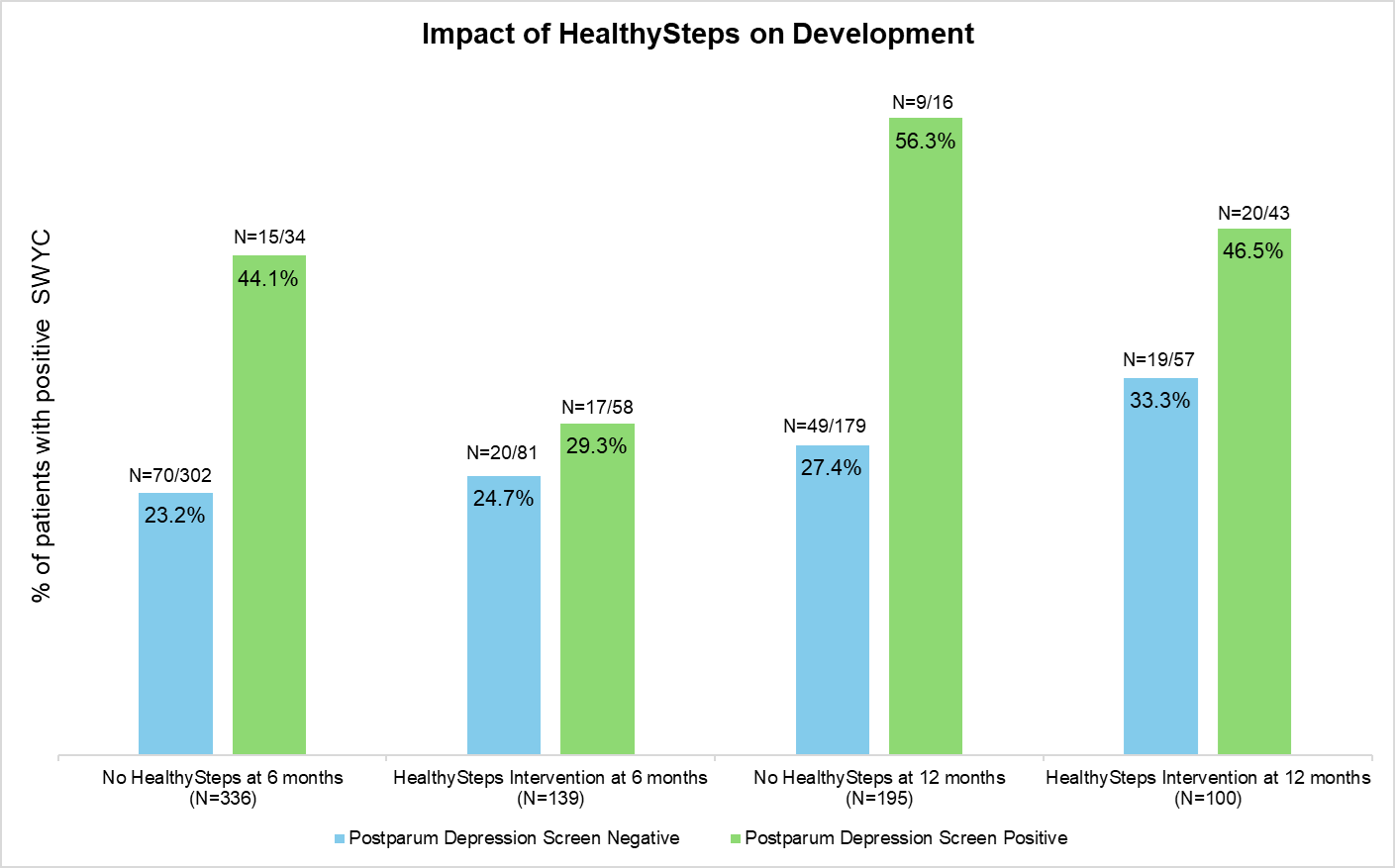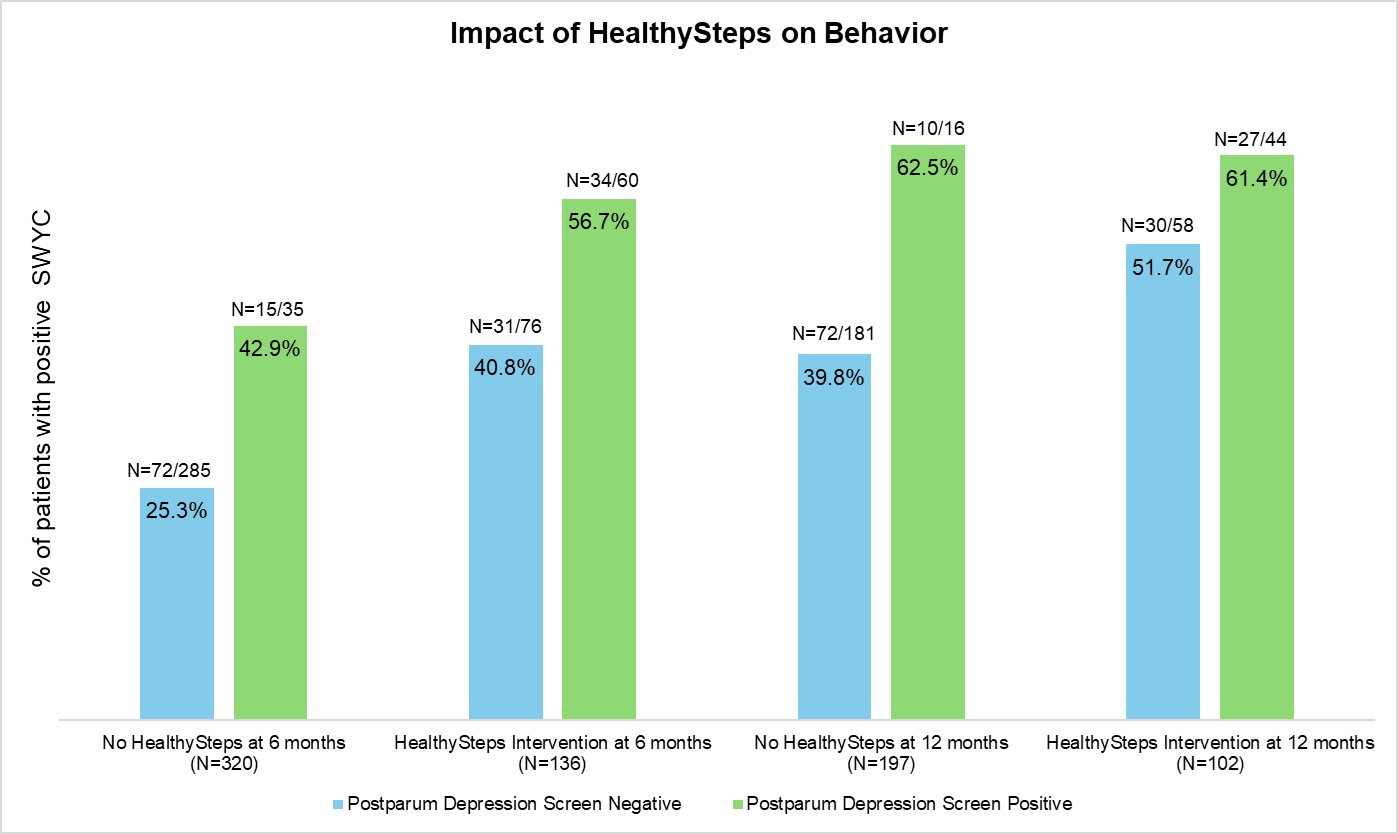Developmental and Behavioral Pediatrics 1: Parenting
Session: Developmental and Behavioral Pediatrics 1: Parenting
775 - HealthySteps To A Healthy Start: Buffering The Effects of Postpartum Depression on Infants
Friday, April 25, 2025
5:30pm - 7:45pm HST
Publication Number: 775.5242
Diane Lee, Weill Cornell Medicine, New York, NY, United States; Mangala Rajan, Weill Cornell Medicine, New York, NY, United States; Rachel Wirtshafter, Weill Cornell Medicine, New york, NY, United States; Cori Green, Weill Cornell Medicine, New York, NY, United States

Diane Lee, PsyD (she/her/hers)
Psychologist
Weill Cornell Medicine
New York, New York, United States
Presenting Author(s)
Background: The Healthy Steps Program (HS) integrates a mental health specialist into pediatric primary care (PC) and improves postpartum depression (PPD) but if it mitigates the negative impact of PPD on infant development and behavior is unknown.
Objective: To examine associations between HS intervention and infant development and behavior at 6 and 12 months among those whose caregiver had a PPD screen.
Design/Methods: Retrospective chart review of electronic health records from May 2022 to June 2024 in an urban academic PC practice was done for infants whose caregiver completed a PPD screen within the first 6 months followed by a 6 or 12 month development and behavior screen. The Edinburg Postnatal Depression Scale (EPDS) was used to screen for PPD (positive > 10). The Survey of Well-being of Young Children (SWYC) was used to screen for development and behavior. Standard scoring dichotomized SWYC results to positive/negative. Associations between HS intervention and SWYC results by PPD screen results were assessed using a difference-in-difference (DID) approach. A negative percentage implies that differences between PPD+ and PPD- groups were lower among patients with HS vs. no HS.
Results: Of 1,113 caregivers screened for PPD, 551 infants had a SWYC at 6 or 12 months. Of those, 20% screened positive for PPD. Among caregivers with PPD+ and no HS, 44.1% had positive development screens at 6 months compared to 29.3% of patients with HS. Among caregivers with PPD-, these proportions were 23.2% and 24.7%. The difference in SWYC positivity among those who had HS vs. not was DID= -16.3%, 95% CI [-39.3%, 6.6%]. At 12 months, 56.3% of PPD+ caregivers with no HS had infants who screened positive for development compared to 46.5% of patients with HS; for PPD- caregivers, 27.4% and 33.3%. The difference in positivity was DID = -15.7%, 95% CI [-47.7%, 16%]. For behavior at 6 months among caregivers with PPD+, 42.9% of patients without HS screened positive compared to 56.7% of patients with HS. At 12 months, 62.5% of patients with PPD+ and no HS screened positive compared to 61.4% of patients with HS. The difference in SWYC positivity among those receiving HS vs. not was DID= -1.7%, 95% CI [-22.2%, 25.7%] at 6 months and DID= -15.7% 95% CI [-47.7%, 16%] at 12 months.
Conclusion(s): HS intervention may mitigate the adverse impact that PPD has on infant development. In contrast, more HS patients screened positive for behavior suggesting that HS appropriately reaches infants at higher risk of behavior problems. Further study is needed to understand the differences in impact of HS on development and behavior.
Table 1
.png) Profile of patients
Profile of patientsFigure 1. Impact of HealthySteps on Development
 Percentage of patients who screened positive on the developmental domain of the SWYC at 6 months and 12 months categorized by caregivers who either had at least one positive PPD screen or all negative PPD screens and who either received or did not receive (control) at least one HS intervention.
Percentage of patients who screened positive on the developmental domain of the SWYC at 6 months and 12 months categorized by caregivers who either had at least one positive PPD screen or all negative PPD screens and who either received or did not receive (control) at least one HS intervention.Figure 2. Impact of HealthySteps on Behavior
 Percentage of patients who screened positive on the behavior domain of the SWYC at 6 months and 12 months categorized by caregivers who either had at least one positive PPD screen or all negative PPD screens and who either did or did not receive at least one HS intervention.
Percentage of patients who screened positive on the behavior domain of the SWYC at 6 months and 12 months categorized by caregivers who either had at least one positive PPD screen or all negative PPD screens and who either did or did not receive at least one HS intervention. 
